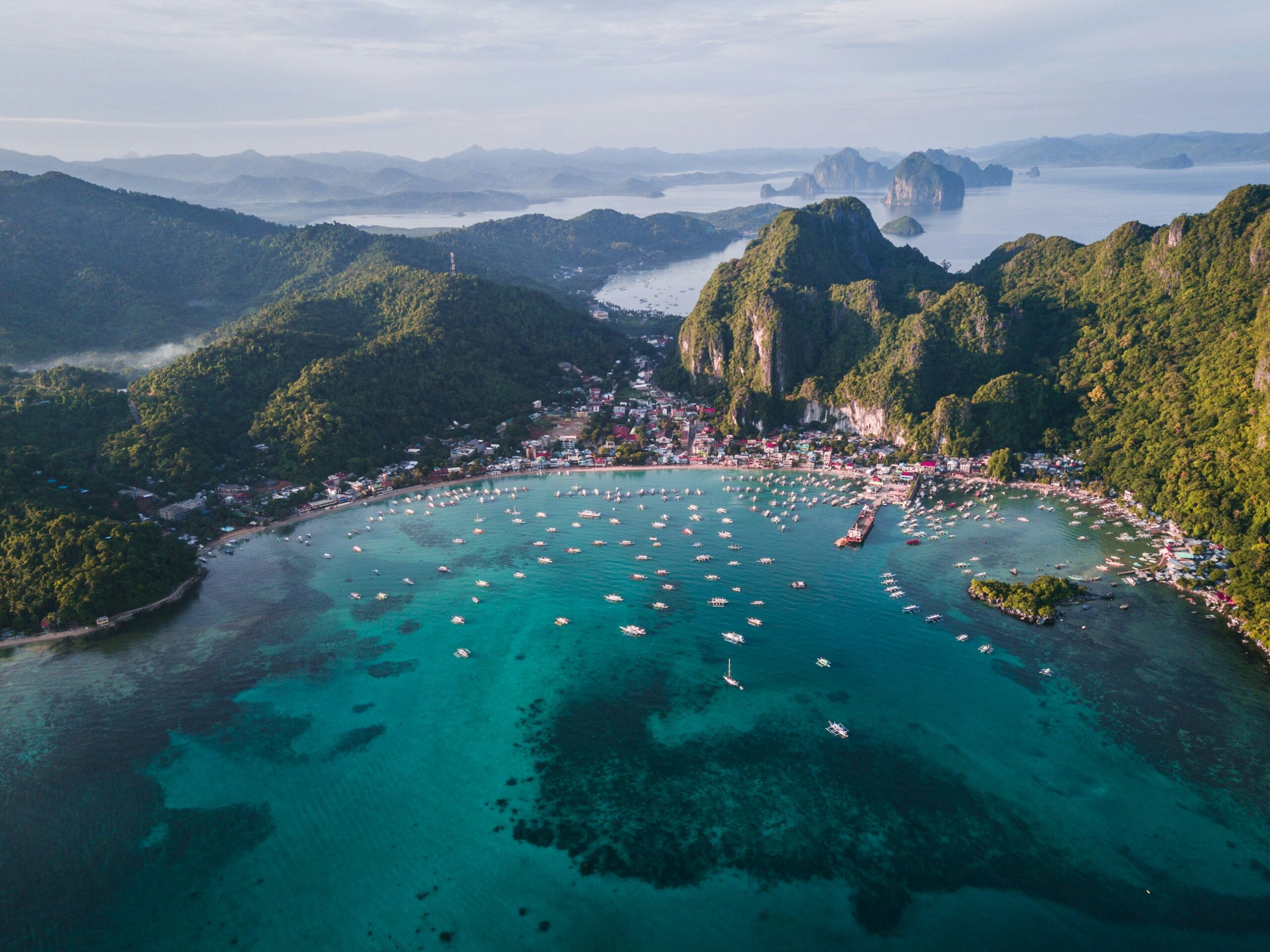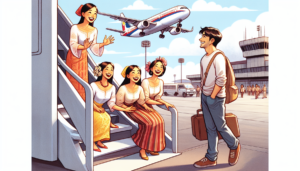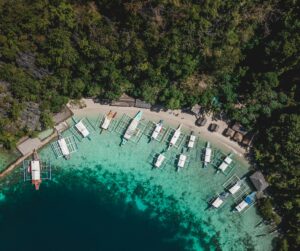Understanding when to pop over to the Philippines can make or break your holiday experience. The country thrives under two main weather outfits: dry and wet seasons. Each has its own set of perks and quirks for those wanderlust souls.
Dry Season: December to February
Your best bet for a trip to the Philippines is from December to February. These months dish out temperatures between a comfy 75°F to 88°F, perfect for soaking up the sun and getting lost in nature (Audley Travel). You can hit all those Instagram-worthy islands and secret spots without swimming in mud, a win-win for everyone wanting to dive into the local vibe.
| Month | Average Temperature (°F) | Crowd Mood |
|---|---|---|
| December | 75 – 88 | Party time, packed with folks |
| January | 75 – 88 | Top-notch for beach bums |
| February | 75 – 88 | Dive deep and trek high |
Be ready for beachy days and encounters with the ocean giants. Hot spots like Palawan, Boracay, El Nido, and Cebu are picture-perfect but expect to pay a bit more and share them with fellow adventure seekers.
Wet Season: May to October
From May to October, the skies like to mix it up with a dash of rain. Despite the wet forecasts, you’ll find stretches of sun and warmth around 86°F, perfect for chilling without the noise of big crowds (Audley Travel).
| Month | Average Temperature (°F) | Crowd Mood |
|---|---|---|
| May | 75 – 88 | Just a sprinkle, mostly dry |
| June | 75 – 88 | Here comes the rain |
| July | 75 – 88 | Breezy days ahead |
| August | 75 – 88 | Wettest month |
| September | 75 – 88 | Peaceful, less pricey |
| October | 75 – 88 | Rain slows down |
For the money-savvy backpackers, the wet season’s your friend. You get more bang for your buck as prices dip, though you may need a raincoat in some places. Southern spots like Palawan often escape the rains, so there’s still lots of exploring to do with no queues in sight. Surf season calls to all wave chasers on Siargao Island during these months.
No matter when you decide to explore the Philippines, think about what kind of traveler you are—whether you’re about skipping the line or embracing the adventures on a dime. Curious about specific destinations? Check out our guide on the best places to visit in the philippines.
Filipino Cuisine Experience
Filipino cuisine is a delicious treat for travelers, especially those keen on diving into culture and cooking. The vibrant and flavorful dishes make it a must-try on any trip to the Philippines.
Influences on Filipino Food
Filipino food is like a big family gathering of tastes from all over. You got flavors from neighbors like Japan, China, Thailand, and Vietnam, and a sprinkle of Spanish and Indonesian charm in there too (Cozymeal). This mix of cultures has turned Filipino eats into something truly special that food lovers can’t resist.
Now, let’s talk geography—over 7,000 islands means a bag full of unique dishes and flavors depending on where you are. Up in Bicol, they’ll tickle your taste buds with spicy treats. Head over to the Visayas, and it’s a seafood party you won’t want to miss.
Flavor Profile of Filipino Cuisine
Filipino dishes are a rollercoaster of taste with a party mix of salty, sweet, and sour that will keep your taste buds guessing. This trio of flavors isn’t just tossed in randomly; it weaves a delicious story with every bite (Cozymeal).
| Flavor | What It’s All About |
|---|---|
| Salty | Found in good ol’ soy sauce, fish sauce, and some secret marinades your grandma swears by. |
| Sweet | Comes from sugar, fruits, or sticky sweet sauces. |
| Sour | Brought to you by the tang of vinegar, tamarind, or calamansi. |
Whether you’re trying your hand at cooking, hitting up local food spots, or joining a cooking class, there’s magic in those flavors to discover (Cozymeal). If you’re traveling to the Philippines, even for a bit of romance, sharing a local meal can spark a connection like nothing else. Check out our guides on best places to visit in the philippines and philippines tourist attractions for more on getting around.
Getting Around the Philippines
Exploring the Philippines is like stepping into a vibrant chapter of adventure that’s begging to be written. Whether you’re fresh off the plane or making your way through local islands, knowing how to get around and keeping an eye on safety can turn your visit into a breezy experience, especially if you’re mingling with the locals.
Transportation Options
Traveling through the Philippines, you’ll find all sorts of ways to zip around its stunning scenes and bustling streets. Here’s a bit of what you can expect:
| Way to Travel | What It’s Like |
|---|---|
| Public Buses | They’re everywhere and super affordable, great for hopping from one city to the next. Just pack a bit of patience as they can get crowded and sometimes run on “Filipino Time” (you know, not exactly punctual). |
| Tricycles | A classic move in smaller towns. These little motorized rides are perfect for short hops and a fun way to get the feel of local life. |
| Jeepneys | The legends of Filipino transport! Flashy, cheap, and shared—these are your lively taxi for short to medium treks. |
| Taxis and Ride-Sharing | Big cities like Manila have these, with apps like Grab to make your life easier. Just double-check the rates to dodge surprises. |
| LRT and MRT (Manila) | The city’s elevated rail systems (think LRT1, LRT2, MRT3) make getting around a breeze, especially during rush hour. Get yourself a Beep Card to skip fumbling for cash. Check out World Nomads for more. |
Manila has some of the tightest traffic on the planet—second worst, actually! So, keep away from the snarls between 7:30-9:30 am and 5-7 pm. Plus, with fewer than 100 miles of working rails nationwide, all these options are your best bet for moving smoothly.
Safety Tips for Traveling
The Philippines is a jaw-dropper, no doubt, but staying safe is key. Here are some no-nonsense tips to keep your trip trouble-free:
- Be Vigilant: There are issues here and there, like crime or civil unrest, so stay sharp and be aware of your surroundings—especially in certain hotspots. See more at Travel.State.Gov.
- Stick to Safe Zones: Some areas, like the Sulu Archipelago or parts of Mindanao, aren’t the best places to wander about right now. They’re no-gos for a good reason Travel.State.Gov.
- Skip Driving: Roads can be wild with the traffic and less-than-predictable driving styles. Best to lean on public transport to dodge those hazards World Nomads.
- Stay Updated: Keep your ear to the ground with travel advisories and news to sidestep any unpleasant surprises. Find out more from philippines travel advisory.
By keeping these travel tips in your back pocket, you’ll soak up all the magic the Philippines has to offer, and maybe even make unexpected friends along the way. If your aim is to meet someone special, online dating or checking out the best places to visit in the philippines could be the perfect starting point.
Visa Information
When you’re planning a trip to the Philippines, getting a handle on the visa stuff is key. Especially for guys looking to find some romance over there, being in the know about entry requirements is a must for a hassle-free adventure.
Entry Requirements
If you’re from a country that the Philippines has made nice with, like the United States, you can roll into the country without a visa for up to 30 days. Planning to hang around longer? You’ll need to snag a visa. Returning Filipinos, or Balikbayans, get a sweet deal—they’re welcomed back visa-free for up to a year. Just show up with a passport good for six months past your planned departure and proof of your Filipino past, like an old passport or official birth certificate. Foreign family members tagging along score the same deal if they can prove they’re related.
| Country Status | Visa Requirement | Duration of Stay |
|---|---|---|
| Visa-exempt countries | No visa needed | Up to 30 days |
| Balikbayans | No visa needed | Up to 1 year |
| Other foreigners | Visa required | Over 30 days |
Curious about the nitty-gritty on passports? Check out the details here.
Visa Types and Application Process
The Philippine Embassy has a menu of visa choices for folks visiting for fun, sports, doctors’ appointments, family hangouts, and cultural shindigs. To get your visa, you’re going to need to fill out some paperwork, bring the right documents, and maybe chat with someone at the embassy.
Thinking about parking yourself in the Philippines for retirement? The Special Resident Retiree’s Visa is your ticket, and you’ll need to buddy up with the Philippine Retirement Authority to get it rolling.
Here’s a quick rundown of popular visa types:
| Visa Type | Purpose | Eligibility |
|---|---|---|
| Tourist Visa | Sightseeing, family visits | Most foreign nationals |
| Special Resident Retiree’s Visa | Retirement | Folks 35 and older |
| Non-quota Immigrant Visa (13A) | Marriage to Filipinos | Spouses/kids under 21 unmarried |
Got one of those non-quota immigrant visas? Well, then, you’re clear for duty-free goods shipping to the Philippines, but keep in mind, paperwork can take about two weeks to sail through.
For the latest scoop on getting a visa, swing by the Philippines visa requirements page for step-by-step guidance and any new updates.





